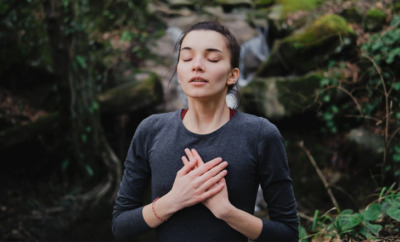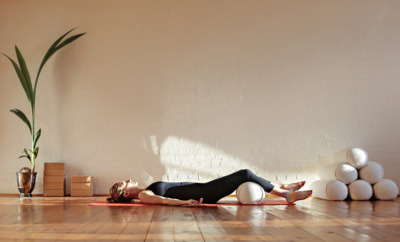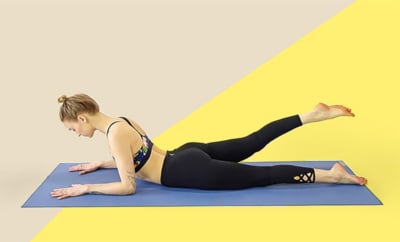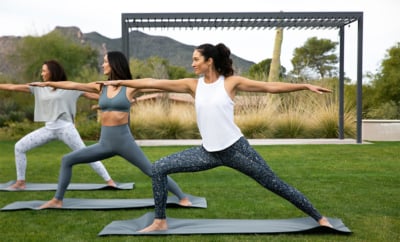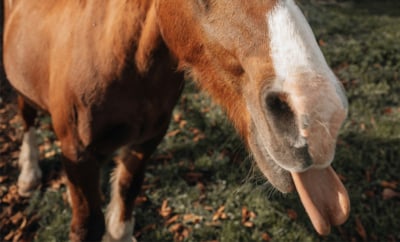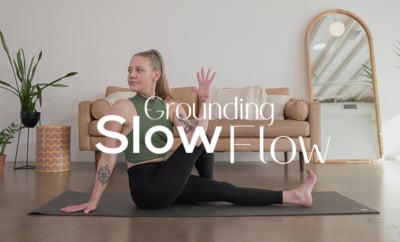You’ll Never Skip Savasana Again When You Hear These Benefits of Corpse Pose

BenefitsOfSavasana feature
Did you know that a five minute Savasana (Corpse Pose) is recommended for every 30 minutes of a yoga practice? Something tells me we aren’t lying in Savasana for 10 full minutes after every hour-long class. In fact, there are some yoga formats that have little to no emphasis on Savasana.
Sometimes, Savasana is simply not led and people are instructed to “leave at your own time.” Which, in this fast-paced, stressed-out world is probably in less than 20 seconds.
Other times, the instructor’s Savasana lasts just about as long as the five-breath Pigeon Pose (though, to be fair, Pigeon Pose can feel deceptively long). So why should we make it a priority to lay down after class? What’s the deal about this final resting pose called Savasana?
Read on to discover the amazing benefits of Savasana and why you’ll never want to skip it again!
Rest Deeply and Reset Yourself With This Yoga Nidra Class
Another way to rest? Yoga Nidra. This guided practice on YA Classes is deeply calming and great for when you need to relax and reset. Yoga Nidra means ‘yogic sleep’ and it’s equivalent to several hours of deep sleep! Try it out (but we still don’t encourage you to skip Savasana!) Not yet a member? Try it out for free for 14 days.
What Is Savasana?
In Savasana, the practitioner is asked to relax their body completely, which can feel pretty easy after a thorough yoga class.
You may lay “starfish” style, with your arms and legs open wide and relaxed on the floor, or supported by bolsters, but it may feel more comfortable to place your hands gently over your chest or your stomach.
Then you try to be still, release any manipulation of the breath, and – while remaining completely aware of the present moment – let your body and mind let go of all previous attachments as if you were dead.
You read that correctly. In Sanskrit, Savasana is actually derived from two words: sava, meaning “corpse,” and asana, meaning “pose” or “seat.” This is why sometimes Savasana is referenced as Corpse Pose or Final Relaxation Pose.
Want to learn more about Sanskrit, the language of yoga? Start with this Quick Guide to Sanskrit: 15 Common Yoga Terms Translated
Why Do We Practice Savasana?
The mental release of worldly attachments, brain chatter, and “I” makers – thoughts like “I am…,” “I enjoy…,” “I feel…” – is one of the biggest goals of yoga.
It’s a goal that resembles what one might imagine as “becoming one with the universe” through death might be like. It can also be a figurative death of the ego-self in favor of a neutral clean slate.
This is one reason why Savasana is considered to be one of the most advanced poses in yoga. You must consciously choose to remain still and focus on nothing but the present moment, without any distraction like the breath or a physically demanding pose.
Why Is Savasana So Hard? 10 Musing’s We’ve All Had During Corpse Pose
Tapping into complete union with the world around you takes time and practice, which is why we make time to practice it after every class.
But have no fear! Even if you don’t find oneness with all things, there are still some incredible health benefits of Savasana.
Savasana is when our body soaks up the physical benefits of the class.
Savasana is when our body soaks up the physical benefits of the class.
All of the good things we know that come with yoga – muscle building, blood oxygenation, tissue flexibility and mobility, and stress hormone reduction, etc. – kick in once the body is safely in the hands of your parasympathetic nervous system, aka your “rest-and-digest” response.
Plus, Savasana can just feel pretty darn good after a physically demanding class or a long day.
Looking for more yoga history, tips, and knowledge? Check out our full library of Yoga articles here
These Are the Top Benefits of Savasana:
Relaxing the physical body in Savasana has numerous benefits, including:
- Lowered blood pressure
- Decreased heart rate
- Decreased metabolic rate
- Decreased muscle tension
These things, in turn, create long-term benefits like:
- Fewer headaches
- Less fatigue and higher quality sleep
- Fewer anxiety and panic attacks
- Better digestion
- Increased overall energy levels
- Improved concentration and memory
All of these are the result of a happy nervous system. Overall, the calm you feel on the mat is felt throughout every organ and nerve.
Corpse Pose: The Takeaway On the Benefits of Savasana
Possibly one of the most important parts of Savasana is the effect that total relaxation of the body has on our nervous system.
Yoga teachers! Here’s How to Lead a Badass Savasana (In 6 Steps)
The peripheral nervous system has two main functions: fight-or-flight versus rest-and-digest. When we are exerting ourselves, working up a sweat or moving through postures that are challenging for us, our body doesn’t know that we are doing this for fun.
Historically speaking, sweat meant struggle and struggle meant that the nervous system needed to go into fight-or-flight to keep us safe. Giving our body a chance to relax and let the “threat” pass gives us the chance to really soak up all of the benefits of our yoga practice and move into our rest-and-digest nervous system.
Savasana is a sacred time during your practice to connect with your most authentic self.
Savasana is also a sacred time during practice when we have the chance to connect with our most authentic self. Creating a mind-body connection can be incredibly healing and empowering, so making it a priority at the end of every class can make a huge difference in our spiritual growth.
What has been your experience in Corpse Pose? Do you make the time for it? Have you noticed the benefits of Savasana? Let us know in the comments below!


This Month's Letter
From the Editor
Monthly motivation and food for
thought from our founder.




